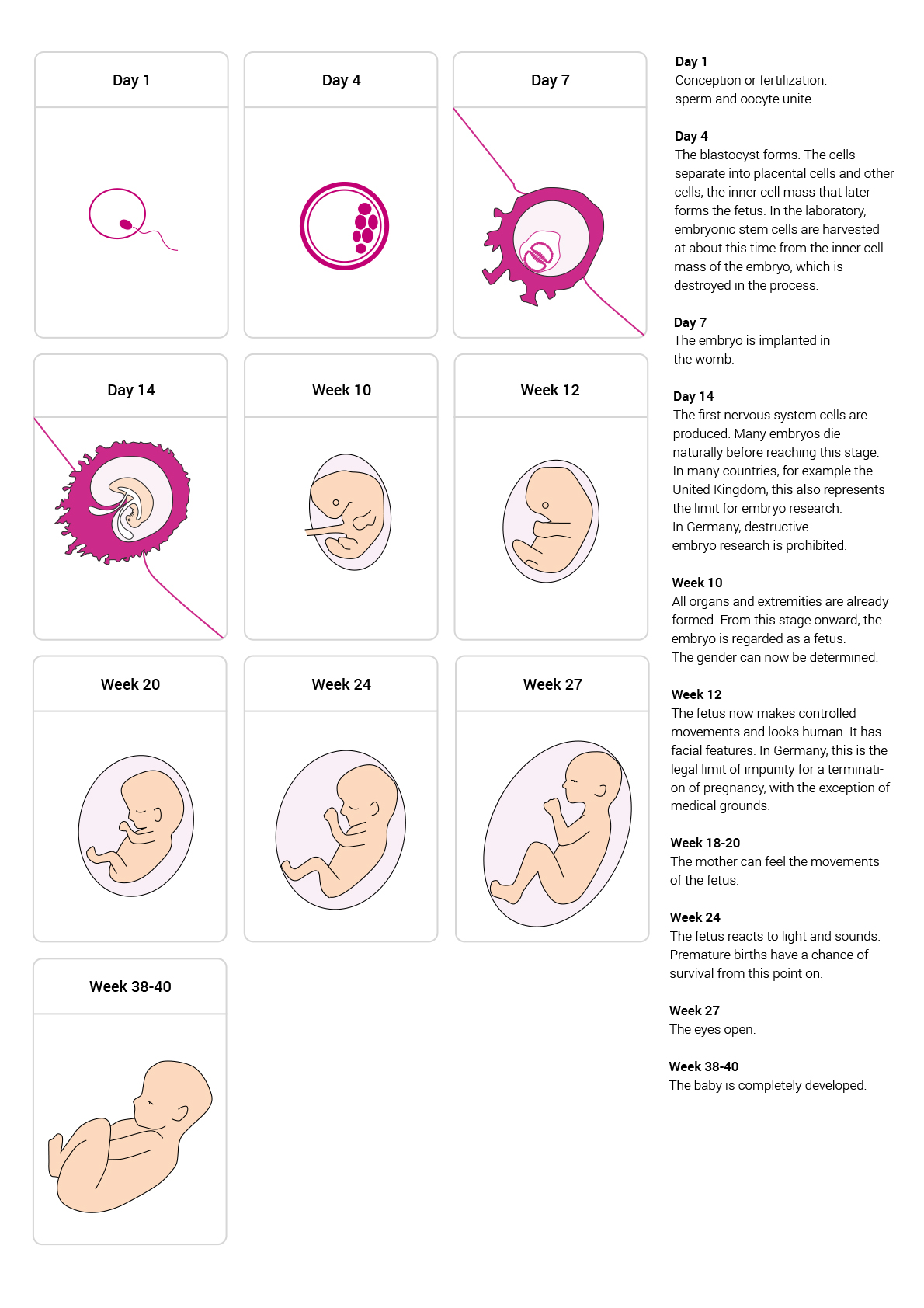Position 1: From fertilization!
 Photo: A sperm fertilizes an egg.
Photo: A sperm fertilizes an egg.
Source: Wikimedia
Reasoning example:
The development of a fertilized egg cell into an infant is a continuous process, and any attempt to determine at what point of development the human individual begins would be an artificial definition. A human embryo is an embryonic human being, comparable to an infant, who is also a human being at the infant stage. And although an embryo does not yet have all the characteristics of a full-grown human, it has the potential to develop into one and should therefore be treated with the necessary respect for the dignity of a human being.
Position 2: At implantation in the uterus!
Reasoning example:
Successful implantation is the prerequisite for embryonic development. Implantation takes place about six days after fertilization. From implantation on, the embryo must be treated with the necessary respect, namely humanely. In nature, it often happens that the fertilized egg is not successfully implanted in the uterus but is rejected. We therefore have no knowledge of these embryos. In fertility treatment (in vitro fertilization), this stage is only an accumulation of cells in an artificial environment.
Position 3: The embryo becomes worthier of protection with time!
Reasoning (example):
When someone dies, people tend to feel the loss differently, depending on how old the person was. A fertilized egg prior to implantation in the uterus may therefore receive less attention than an embryo or a baby already born. More than half of fertilized eggs are lost for natural reasons prior to implantation. So, if this loss is considered part of the natural process, the use of some embryos in stem cell research should not cause us any moral concerns.
In our legal system, people are granted personality rights only after birth. But there are other protective rights that the embryo already enjoys before birth.
There are some stages of embryonic development that could give rise to increasing status worthy of protection:
- Implantation of the embryo into the uterine wall, approximately six days after fertilization
- The appearance of the primitive streak, which is associated with the first sign of a developing nervous system, approximately at day 14. After the 14th day, it is impossible for the embryo to divide to form twins. Until then, the embryo can still divide to become two or more fetuses, that is, multiple individuals. Likewise, further development can cease completely.
- The stage of development at which the fetus would be able to survive outside the uterus (approximately 24 weeks)
if born prematurely
- Actual birth (after approximately 40 weeks)
Position 4: Only after it is viable outside the womb!
Reasoning (example):
Fertilized human egg cells remain simply parts of the human body until they have developed far enough to survive on their own. We should show the same respect for a
blastocyst as we would also show to the property of others. If we destroy a blastocyst prior to implantation, we do it no harm, as it has no hopes, desires, expectations, goals or intentions that we could harm.
The human embryonic and fetal development

Illustration: Stages of the embryonic and fetal development